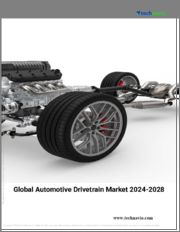
|
시장보고서
상품코드
1511263
세계의 항공기 엔진용 ADT 시장 : 항공기 유형, 엔진 유형, 재료 유형, 부품 유형, 용도별, 지역별 분석 및 예측(-2030년)Aeroengine Accessory Drive Train Market Forecasts to 2030 - Global Analysis By Aircraft Type, Engine Type, Material Type, Component Type, Application and By Geography |
||||||
Stratistics MRC에 따르면 세계 항공기 엔진용 ADT 시장은 2024년 8억 8,040만 달러를 차지하고, 2030년에는 13억 9,710만 달러에 이를 것으로 예측되며, 예측 기간 중 복합 연간 성장률(CAGR)은 8.0%로 성장할 전망입니다. 일반적으로 AADT라고 불리는 항공기 엔진용 ADT는 항공기 엔진의 중요한 부품입니다. AADT는 기어, 샤프트 및 베어링으로 구성된 시스템으로 엔진에서 항공기 작동에 필요한 다양한 액세서리로 동력을 전달합니다. 이러한 액세서리에는 유압 펌프, 발전기, 연료 펌프, 윤활 시스템 등 항공기의 기능에 필수적인 부품이 포함됩니다. AADT의 설계는 엔진과 항공기의 전반적인 성능을 최적화하기 위해 출력 요건, 속도 조정, 토크 전달, 시스템 중량 등의 요소를 고려해야 합니다.
국제민간항공기관(ICAO)에 따르면 2020년 항공 여객 수는 약 43억 명으로 2020년 대비 6% 이상 증가했습니다.
저연비 솔루션에 대한 수요
시장에서는 연료 효율적인 솔루션에 대한 수요가 급증하고 있습니다. 이 추세는 항공 산업이 이산화탄소 배출량과 운항 비용 절감에 주력하고 있기 때문입니다. 제조업체는 성능을 저하시키지 않고 연료 효율을 높이기 위해 경량 재료, 고급 윤활 시스템, 최적화된 설계 등의 부문으로 기술 혁신을 진행하고 있습니다. 이 시프트는 신뢰성과 성능이 높은 부속 드라이브 트레인 솔루션을 제공하는 반면, 지속가능성과 엄격한 규제 기준을 충족하는 업계의 헌신을 반영합니다.
대체품의 가용성
시장의 과제는 대체품의 가용성에 있습니다. 이러한 부품은 특수하며 항공기 성능에 중요한 역할을 하므로 적절한 대체품을 찾기가 어렵습니다. 제조업체는 신뢰성, 호환성 및 규제 준수를 보장해야 하지만, 이 모든 것이 대체품 선택을 좁힐 수 있습니다. 이러한 희소성은 비용 상승, 리드타임의 장기화, 특정 공급업체에 대한 의존도를 증가시켜 업계 이해관계자들에게 중대한 과제를 초래합니다.
최신형 민간 항공기에 대한 수요 증가
시장에서는 최신 민간 항공기에 대한 수요가 급증하고 있습니다. 이러한 성장은 항공 기술의 발전, 항공 여행 증가, 보다 효율적이고 신뢰성 있는 항공기 시스템에 대한 요구가 원동력이 되고 있습니다. 제조업체는 성능 향상, 유지 보수 감소, 연료 효율 개선 등 최신 항공기 요구 사항을 충족하는 혁신적인 ADT 솔루션 개발에 주력하고 있습니다. 항공산업이 진화하고 세계적으로 확대됨에 따라 이러한 동향은 앞으로도 계속될 것으로 예상됩니다.
높은 개발 비용
재료, 제조 기술 및 복잡한 엔지니어링 요구 사항의 혁신은 이러한 비용의 원인이되었습니다. 또한, 엄격한 안전 및 규제 기준은 대규모 테스트 및 검증 프로세스를 필요로 하며 재무적 부담을 더욱 증가시킵니다. 시장 세분화 기업은 효율적인 자원 배분, 전략적 파트너십 및 기술 진보를 통해 이러한 까다로운 산업 부문에서 경쟁을 유지하기 위해 이러한 비용을 신중하게 관리해야 합니다.
COVID - 19의 영향 :
COVID - 19의 유행은 항공기 엔진용 ADT 시장에 큰 영향을 주었으며 공급망 혼란, 항공 수요 감소, 유지 보수 일정 지연 등을 초래했습니다. 그 결과 항공사는 신규 구매를 연기하고 비용 절감에 주력했기 때문에 시장 성장이 일시적으로 감소했습니다. 그러나 항공업계의 완만한 회복과 지속가능한 여행에 대한 주목이 높아짐에 따라 기술진보와 연비효율이 높은 엔진에 대한 수요 증가가 원동력이 되고 시장은 회복될 것으로 예상됩니다.
예측 기간 동안 일반 항공 부문이 최대가 될 전망입니다.
일반 항공 부문은 효율적이고 신뢰할 수 있는 ADT 시스템의 혁신과 수요를 견인하고 예측 기간 동안 최대가 될 것으로 예상됩니다. 소형 항공기와 민간 항공에 중점을 둔 이 부문은 경량 재료, 컴팩트한 디자인, 첨단 기술을 강조하며 엄격한 안전 기준을 충족하면서 성능을 향상시킵니다. 시장의 영향력은 그 규모에 그치지 않고, 동향에 영향을 미치고, 보다 넓은 업계의 벤치마크를 설정하고 있습니다.
예측 기간 동안 복합 연간 성장률(CAGR)은 알루미늄 부문이 가장 높을 것으로 예측됩니다.
예측 기간 동안 복합 연간 성장률(CAGR)이 가장 높을 것으로 예상되는 것은 알루미늄 부문입니다. 강도 대 중량비가 높기 때문에 기어박스 하우징, 샤프트, 브래킷 등의 중요한 부품에 이상적이며 구조적 무결성을 손상시키지 않고 전체 시스템의 중량을 줄일 수 있습니다. 이는 엄격한 규제 기준을 달성하는 데 도움이 될 뿐만 아니라 부품의 수명을 연장하고 유지보수 비용을 줄임으로써 최신 항공 엔진 설계에서 알루미늄의 필수적인 역할을 확고하게 합니다.
최대 점유율을 차지하는 지역
북미는 연료 효율이 높은 엔진의 필요성, 항공 여객수 증가, 기술 진보 등의 요인에 따라 예측 기간 동안 최대 시장 점유율을 차지할 것으로 예측됩니다. 이 시장에는 기어 박스 어셈블리, 펌프, 발전기 등 항공기 엔진의 효율적인 작동에 필수적인 광범위한 부품이 포함되어 있습니다. 배출량 저감과 성능 향상에 중점을 두는 중, 경량 재료나 보다 효율적인 설계를 요구하는 경향이 강해지고 있습니다.
복합 연간 성장률(CAGR)이 가장 높은 지역 :
예측 기간 동안 복합 연간 성장률(CAGR)이 가장 높은 것은 아시아태평양의으로 예측됩니다. 이 지역에서는 가처분 소득 증가, 도시화, 중간층 증가로 항공 수요가 급증하고 있습니다. 이 때문에 민간 항공기의 수주가 증가하여 항공기 엔진용 ADT 수요를 견인하고 있습니다. 이 지역의 일부 국가에서는 국방 예산이 증가하고 있기 때문에 군용기 및 항공기 엔진용 ADT와 같은 관련 부품에 대한 수요가 증가하고 있습니다.
무료 사용자 정의 서비스 :
이 보고서를 구독하는 고객은 다음 무료 맞춤설정 옵션 중 하나를 사용할 수 있습니다.
- 기업 프로파일
- 추가 시장 진출기업의 종합적 프로파일링(3개사까지)
- 주요 기업의 SWOT 분석(3개사까지)
- 지역 세분화
- 고객의 관심에 응한 주요국 시장 추정,예측,복합 연간 성장률(CAGR)(주 : 타당성 확인에 따름)
- 경쟁 벤치마킹
- 제품 포트폴리오, 지리적 존재, 전략적 제휴별 주요 기업 벤치마킹
목차
제1장 주요 요약
제2장 서문
- 개요
- 이해관계자
- 조사 범위
- 조사 방법
- 데이터 마이닝
- 데이터 분석
- 데이터 검증
- 조사 접근
- 조사 정보원
- 1차 조사 정보원
- 2차 조사 정보원
- 전제조건
제3장 시장 동향 분석
- 소개
- 성장 촉진요인
- 억제요인
- 기회
- 위협
- 용도 분석
- 신흥 시장
- COVID - 19의 영향
제4장 Porter's Five Forces 분석
- 공급기업의 협상력
- 구매자의 협상력
- 대체품의 위협
- 신규 참가업체의 위협
- 경쟁 기업간 경쟁 관계
제5장 세계 항공기 엔진용 ADT 시장 : 항공기 유형별
- 소개
- 민간 항공기
- 일반항공
- 지역 항공기
- 군용기
- 기타
제6장 세계 항공기 엔진용 ADT 시장 : 엔진 유형별
- 소개
- 터보 팬 엔진
- 터보 샤프트 엔진
- 터보프롭 엔진
- 터보 제트 엔진
- 기타
제7장 세계 항공기 엔진용 ADT 시장 : 재료 유형별
- 소개
- 마그네슘
- 강철
- 알루미늄
- 기타
제8장 세계 항공기 엔진용 ADT 시장 : 부품 유형별
- 소개
- 기어박스
- 발전기
- 커플링
- 펌프스
- 기타
제9장 세계 항공기 엔진용 ADT 시장 : 용도별
- 소개
- 엔진 구동 액세서리
- 보조 동력 장치(APU)
- 환경 제어 시스템
- 기타
제10장 세계 항공기 엔진용 ADT 시장 : 지역별
- 소개
- 북미
- 미국
- 캐나다
- 멕시코
- 유럽
- 독일
- 영국
- 이탈리아
- 프랑스
- 스페인
- 기타 유럽
- 아시아태평양
- 일본
- 중국
- 인도
- 호주
- 뉴질랜드
- 한국
- 기타 아시아태평양
- 남미
- 아르헨티나
- 브라질
- 칠레
- 기타 남미
- 중동 및 아프리카
- 사우디아라비아
- 아랍에미리트(UAE)
- 카타르
- 남아프리카
- 기타 중동 및 아프리카
제11장 주요 개발
- 계약/파트너십/협업/합작투자(JV)
- 인수와 합병
- 신제품 발매
- 사업 확대
- 기타 주요 전략
제12장 기업 프로파일링
- GE Aviation
- Rolls - Royce Holdings plc
- Safran SA
- Pratt & Whitney
- Honeywell Aerospace
- Woodward, Inc.
- Liebherr Group
- SKF Group
- Parker Hannifin Corporation
- Moog Inc.
- AIM Aerospace
- Sumitomo Precision Products Co., Ltd.
- Technetics Group
- Textron Aviation
- Triumph Group, Inc.
- Magellan Aerospace Corporation
According to Stratistics MRC, the Global Aeroengine Accessory Drive Train Market is accounted for $880.4 million in 2024 and is expected to reach $1397.1 million by 2030 growing at a CAGR of 8.0% during the forecast period. The Aeroengine Accessory Drive Train, commonly referred to as AADT, is a critical component in aircraft engines. It's a system of gears, shafts, and bearings that transmits power from the engine to various accessories necessary for the operation of the aircraft. These accessories can include hydraulic pumps, generators, fuel pumps, lubrication systems, and other components essential for the aircraft's functionality. The design of the AADT must consider factors such as power requirements, speed regulation, torque transmission, and system weight to optimize the overall performance of the engine and aircraft.
According to the International Civil Aviation Organization (ICAO), around 4.3 billion passengers accounted for air travel in 2020, exhibiting a rise of more than 6 percent compared to 2020.
Market Dynamics:
Driver:
Demand for fuel-efficient solutions
The market is witnessing a surge in demand for fuel-efficient solutions. This trend is driven by the aviation industry's focus on reducing carbon emissions and operating costs. Manufacturers are innovating in areas like lightweight materials, advanced lubrication systems, and optimized designs to enhance fuel efficiency without compromising performance. This shift reflects the industry's commitment to sustainability and meeting stringent regulatory standards while delivering reliable and high-performing accessory drive train solutions.
Restraint:
Availability of substitutes
In the market, the challenge lies in the availability of substitutes. Given the specialized nature of these components and their critical role in aircraft performance, finding suitable alternatives can be difficult. Manufacturers must ensure reliability, compatibility, and regulatory compliance, all of which can limit the pool of substitute options. This scarcity can lead to higher costs, longer lead times, and increased dependency on specific suppliers, posing significant challenges for stakeholders in the industry.
Opportunity:
Growing demand for modern commercial aircraft
The market is witnessing a surge in demand for modern commercial aircraft. This growth is driven by advancements in aviation technology, increasing air travel, and the need for more efficient and reliable aircraft systems. Manufacturers are focusing on developing innovative accessory drive train solutions to meet the requirements of modern aircraft, which includes enhanced performance, reduced maintenance, and improved fuel efficiency. This trend is expected to continue as the aviation industry evolves and expands globally.
Threat:
High development costs
Innovations in materials, manufacturing techniques, and complex engineering requirements contribute to these expenses. Additionally, stringent safety and regulatory standards necessitate extensive testing and validation processes, further adding to the financial burden. Market players must carefully manage these costs through efficient resource allocation, strategic partnerships, and technology advancements to remain competitive in this demanding industry segment.
Covid-19 Impact:
The COVID-19 pandemic significantly impacted the Aeroengine Accessory Drive Train Market, leading to disruptions in supply chains, reduced demand for air travel, and delayed maintenance schedules. This resulted in a temporary decline in market growth as airlines deferred new purchases and focused on cost-cutting measures. However, with the gradual recovery of the aviation industry and increased focus on sustainable travel, the market is expected to rebound, driven by technological advancements and growing demand for fuel-efficient engines.
The general aviation segment is expected to be the largest during the forecast period
The general aviation segment is expected to be the largest during the forecast period driving innovation and demand for efficient and reliable accessory drive systems. With a focus on smaller aircraft and private aviation, this segment emphasizes lightweight materials, compact designs, and advanced technologies to enhance performance while meeting stringent safety standards. The market's influence extends beyond its size, influencing trends and setting benchmarks for the broader industry.
The aluminum segment is expected to have the highest CAGR during the forecast period
The aluminum segment is expected to have the highest CAGR during the forecast period. Its high strength-to-weight ratio makes it ideal for critical components like gearbox housings, shafts, and brackets, reducing overall system weight without compromising structural integrity. This not only aids in achieving stringent regulatory standards but also extends component lifespan and lowers maintenance costs, solidifying aluminum's indispensable role in modern aeroengine designs.
Region with largest share:
North America is projected to hold the largest market share during the forecast period driven by factors like the need for fuel-efficient engines, increasing air passenger traffic, and advancements in technology. The market includes a wide range of components like gearbox assemblies, pumps, generators, and more, all crucial for the efficient operation of aircraft engines. With a focus on reducing emissions and improving performance, there's a growing trend towards lightweight materials and more efficient designs.
Region with highest CAGR:
Asia Pacific is projected to hold the highest CAGR over the forecast period. The region has seen a surge in air travel demand due to rising disposable incomes, urbanization, and a growing middle class. This has led to increased orders for commercial aircraft, which in turn drives demand for aeroengine accessory drive trains. Several countries in the region are increasing their defense budgets, leading to higher demand for military aircraft and associated components like aeroengine accessory drive trains.
Key players in the market
Some of the key players in Aeroengine Accessory Drive Train market include GE Aviation, Rolls-Royce Holdings plc, Safran SA, Pratt & Whitney, Honeywell Aerospace, Woodward, Inc., Liebherr Group, SKF Group, Parker Hannifin Corporation, Moog Inc., AIM Aerospace, Sumitomo Precision Products Co., Ltd., Technetics Group, Textron Aviation, Triumph Group, Inc. and Magellan Aerospace Corporation.
Key Developments:
In September 2023, Honeywell and Aegiq, a quantum networking and computing company, have signed a memorandum of understanding to explore creating a comprehensive solution to enable more precise and cost-effective design and deployment of space payloads and related ground assets.
In February 2022, Pratt & Whitney Canada, a business unit of Pratt & Whitney, announced the addition of a new lease-to-own option to its growing portfolio of Spare Engine Solutions. The portfolio also includes flexible options such as long-term leasing and on-wing leasing, complementing its existing short-term rentals offering to customers looking to focus on their spending, better plan their monthly expenses, reduce costs, and extend aircraft life.
Aircraft Types Covered:
- Commercial Aircraft
- General Aviation
- Regional Aircraft
- Military Aircraft
- Other Aircraft Types
Engine Types Covered:
- Turbofan Engine
- Turboshaft Engine
- Turboprop Engine
- Turbojet Engine
- Other Engine Types
Material Types Covered:
- Magnesium
- Steel
- Aluminum
- Other Material Types
Component Types Covered:
- Gearboxes
- Generators
- Couplings
- Pumps
- Other Component Types
Applications Covered:
- Engine-Driven Accessories
- Auxiliary Power Units (APUs)
- Environmental Control Systems
- Other Applications
Regions Covered:
- North America
- US
- Canada
- Mexico
- Europe
- Germany
- UK
- Italy
- France
- Spain
- Rest of Europe
- Asia Pacific
- Japan
- China
- India
- Australia
- New Zealand
- South Korea
- Rest of Asia Pacific
- South America
- Argentina
- Brazil
- Chile
- Rest of South America
- Middle East & Africa
- Saudi Arabia
- UAE
- Qatar
- South Africa
- Rest of Middle East & Africa
What our report offers:
- Market share assessments for the regional and country-level segments
- Strategic recommendations for the new entrants
- Covers Market data for the years 2022, 2023, 2024, 2026, and 2030
- Market Trends (Drivers, Constraints, Opportunities, Threats, Challenges, Investment Opportunities, and recommendations)
- Strategic recommendations in key business segments based on the market estimations
- Competitive landscaping mapping the key common trends
- Company profiling with detailed strategies, financials, and recent developments
- Supply chain trends mapping the latest technological advancements
Free Customization Offerings:
All the customers of this report will be entitled to receive one of the following free customization options:
- Company Profiling
- Comprehensive profiling of additional market players (up to 3)
- SWOT Analysis of key players (up to 3)
- Regional Segmentation
- Market estimations, Forecasts and CAGR of any prominent country as per the client's interest (Note: Depends on feasibility check)
- Competitive Benchmarking
- Benchmarking of key players based on product portfolio, geographical presence, and strategic alliances
Table of Contents
1 Executive Summary
2 Preface
- 2.1 Abstract
- 2.2 Stake Holders
- 2.3 Research Scope
- 2.4 Research Methodology
- 2.4.1 Data Mining
- 2.4.2 Data Analysis
- 2.4.3 Data Validation
- 2.4.4 Research Approach
- 2.5 Research Sources
- 2.5.1 Primary Research Sources
- 2.5.2 Secondary Research Sources
- 2.5.3 Assumptions
3 Market Trend Analysis
- 3.1 Introduction
- 3.2 Drivers
- 3.3 Restraints
- 3.4 Opportunities
- 3.5 Threats
- 3.6 Application Analysis
- 3.7 Emerging Markets
- 3.8 Impact of Covid-19
4 Porters Five Force Analysis
- 4.1 Bargaining power of suppliers
- 4.2 Bargaining power of buyers
- 4.3 Threat of substitutes
- 4.4 Threat of new entrants
- 4.5 Competitive rivalry
5 Global Aeroengine Accessory Drive Train Market, By Aircraft Type
- 5.1 Introduction
- 5.2 Commercial Aircraft
- 5.3 General Aviation
- 5.4 Regional Aircraft
- 5.5 Military Aircraft
- 5.6 Other Aircraft Types
6 Global Aeroengine Accessory Drive Train Market, By Engine Type
- 6.1 Introduction
- 6.2 Turbofan Engine
- 6.3 Turboshaft Engine
- 6.4 Turboprop Engine
- 6.5 Turbojet Engine
- 6.6 Other Engine Types
7 Global Aeroengine Accessory Drive Train Market, By Material Type
- 7.1 Introduction
- 7.2 Magnesium
- 7.3 Steel
- 7.4 Aluminum
- 7.5 Other Material Types
8 Global Aeroengine Accessory Drive Train Market, By Component Type
- 8.1 Introduction
- 8.2 Gearboxes
- 8.3 Generators
- 8.4 Couplings
- 8.5 Pumps
- 8.6 Other Component Types
9 Global Aeroengine Accessory Drive Train Market, By Application
- 9.1 Introduction
- 9.2 Engine-Driven Accessories
- 9.3 Auxiliary Power Units (APUs)
- 9.4 Environmental Control Systems
- 9.5 Other Applications
10 Global Aeroengine Accessory Drive Train Market, By Geography
- 10.1 Introduction
- 10.2 North America
- 10.2.1 US
- 10.2.2 Canada
- 10.2.3 Mexico
- 10.3 Europe
- 10.3.1 Germany
- 10.3.2 UK
- 10.3.3 Italy
- 10.3.4 France
- 10.3.5 Spain
- 10.3.6 Rest of Europe
- 10.4 Asia Pacific
- 10.4.1 Japan
- 10.4.2 China
- 10.4.3 India
- 10.4.4 Australia
- 10.4.5 New Zealand
- 10.4.6 South Korea
- 10.4.7 Rest of Asia Pacific
- 10.5 South America
- 10.5.1 Argentina
- 10.5.2 Brazil
- 10.5.3 Chile
- 10.5.4 Rest of South America
- 10.6 Middle East & Africa
- 10.6.1 Saudi Arabia
- 10.6.2 UAE
- 10.6.3 Qatar
- 10.6.4 South Africa
- 10.6.5 Rest of Middle East & Africa
11 Key Developments
- 11.1 Agreements, Partnerships, Collaborations and Joint Ventures
- 11.2 Acquisitions & Mergers
- 11.3 New Product Launch
- 11.4 Expansions
- 11.5 Other Key Strategies
12 Company Profiling
- 12.1 GE Aviation
- 12.2 Rolls-Royce Holdings plc
- 12.3 Safran SA
- 12.4 Pratt & Whitney
- 12.5 Honeywell Aerospace
- 12.6 Woodward, Inc.
- 12.7 Liebherr Group
- 12.8 SKF Group
- 12.9 Parker Hannifin Corporation
- 12.10 Moog Inc.
- 12.11 AIM Aerospace
- 12.12 Sumitomo Precision Products Co., Ltd.
- 12.13 Technetics Group
- 12.14 Textron Aviation
- 12.15 Triumph Group, Inc.
- 12.16 Magellan Aerospace Corporation



















